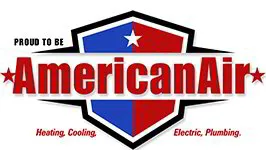Choosing / Buying the Right HVAC System
This HVAC homeowners guide should help you with making the right decisions with your home HVAC. Whether you are replacing your old HVAC system or buying a completely new system, the first step is determining the current heating and cooling needs in the household. The primary consideration is, of course, the sizes of the areas/rooms, but there are other things to look into. Does the house have sufficient insulation? How about the placement of doors and windows and other construction materials used? For example, the more glass area the greater the heat transfer during warm months or heat loss during cold months. Thus, calculating the right HVAC system for your home will spell the difference between energy efficiency and long service of your HVAC unit or inadequate or inefficient heating and cooling or utility bills that run unnecessarily high.
Efficiency Ratings of HVAC Systems
After determining the right capacity of the HVAC system you need, the next thing to look into is the efficiency ratings of HVAC units.
Air Conditioning Systems – When scouting for air conditioning units, check the Seasonal Energy Efficiency Ratio or SEER. The higher the SEER (15 or more) the more efficient it is and the less energy it uses.
Boilers and Furnaces – When shopping for boilers and furnaces, check the energy efficiency rating which is a measure of how efficient these devices are in converting fuel to heat, or the Annual Fuel Efficiency (AFUE) rating. The higher the rating, the more efficient the system is and the less energy it consumes. Hence a rating of 90% means 90% of the fuel is efficiently converted to heat.
Heat Pumps – When looking for a good heat pump, check the efficiency rating otherwise known as the Heating Seasonal Performance Factor (HSPF). The higher the HSPF, the more efficient it is. A rating of 8-9 HSPF is already considered very good.
Use and Maintenance of Your Heating and Cooling System
When operating your HVAC system, keep the temperature settings within the recommended level. This way, you avoid using excessive energy and unnecessary wear and tear of your system.
For the heat settings – keep it between 68° – 72°. Each additional degree can add 3% to the amount of energy needed for heating.
For the cooling settings – keep it between 70° – 76°.
Other tips include:
- Using insulation to help in cooling the room, or using drapes to block off heat from the windows
- Changing air filter as recommended for the type of filter
- Having a professional contractor inspect, clean and make adjustments as necessary in order to ensure efficient operation of your system for years to come.



